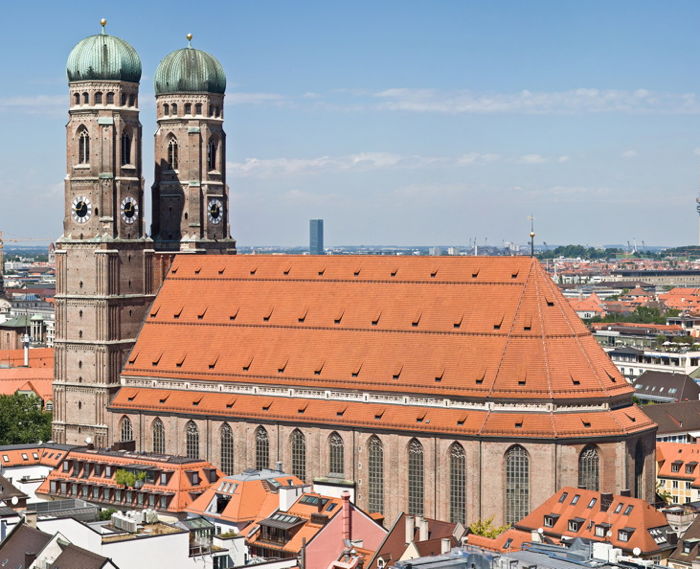Frauenkirche
|
Frauenkirche viewed from nearby Peterskirche's Tower The Frauenkirche (full name Dom zu unserer lieben Frau, "Cathedral of Our Dear Lady") is the cathedral of the Archbishop of Munich and Freising. It is a landmark and is considered a symbol of the Bavarian State Capital. |

|
|
Frauenkirche Photo 127, 1973 |

|
|
Frauenkirche The Frauenkirche (full name Dom zu unserer lieben Frau, "Cathedral of Our Dear Lady") is the cathedral of the Archbishop of Munich and Freising. It is a landmark and is considered a symbol of the Bavarian State Capital. The church towers are widely visible because of local height limits. The city administration prohibits buildings with a height exceeding 358 ft in the city center—within the middle ring. Since November 2004, this prohibition has been provisionally extended outside the ring. As a result, no buildings may be built in the city over the aforementioned height. The south tower can be climbed and offers a unique view of Munich and the nearby Alps. The cathedral, which replaced an older romanesque church built in the 12th century, was commissioned by Duke Sigismund and erected by Jörg von Halsbach. For financial reasons and due to the lack of a nearby stone pit, brick was chosen as building material. Construction began in 1468. Since the cash resources were exhausted in 1479 Pope Sixtus IV granted an indulgence. The two towers were completed in 1488 and the church was consecrated in 1494. However, the building's famous domes atop each tower were not built until 1525. Their design was modelled on the Dome of the Rock in Jerusalem, which in turn took a lead from late Byzantine architecture. The cathedral suffered severe damage during World War II — the roof collapsed and one of the towers suffered severe damage. A major restoration was started after the war and was completed in several stages, the last in 1994. The Late Gothic brick building with round chapel wreath is 358 ft long, 130 ft wide, and 121 ft high. Contrary to a widespread legend that says the two towers with their characteristic hood are exactly one meter different in height, they are almost equal: the north tower is 4.7 in higher. The original design called for pointed spires to top the towers, much like Cologne Cathedral, but those were never built because of lack of money. Instead, the two domes were built during the Renaissance, and are mismatched stylistically with the rest of the building. But this way they have become a distinctive landmark of Munich. Photo 14, 1985 |

|
|
Frauenkirche exterior wall Photo 15, 1985 |

|